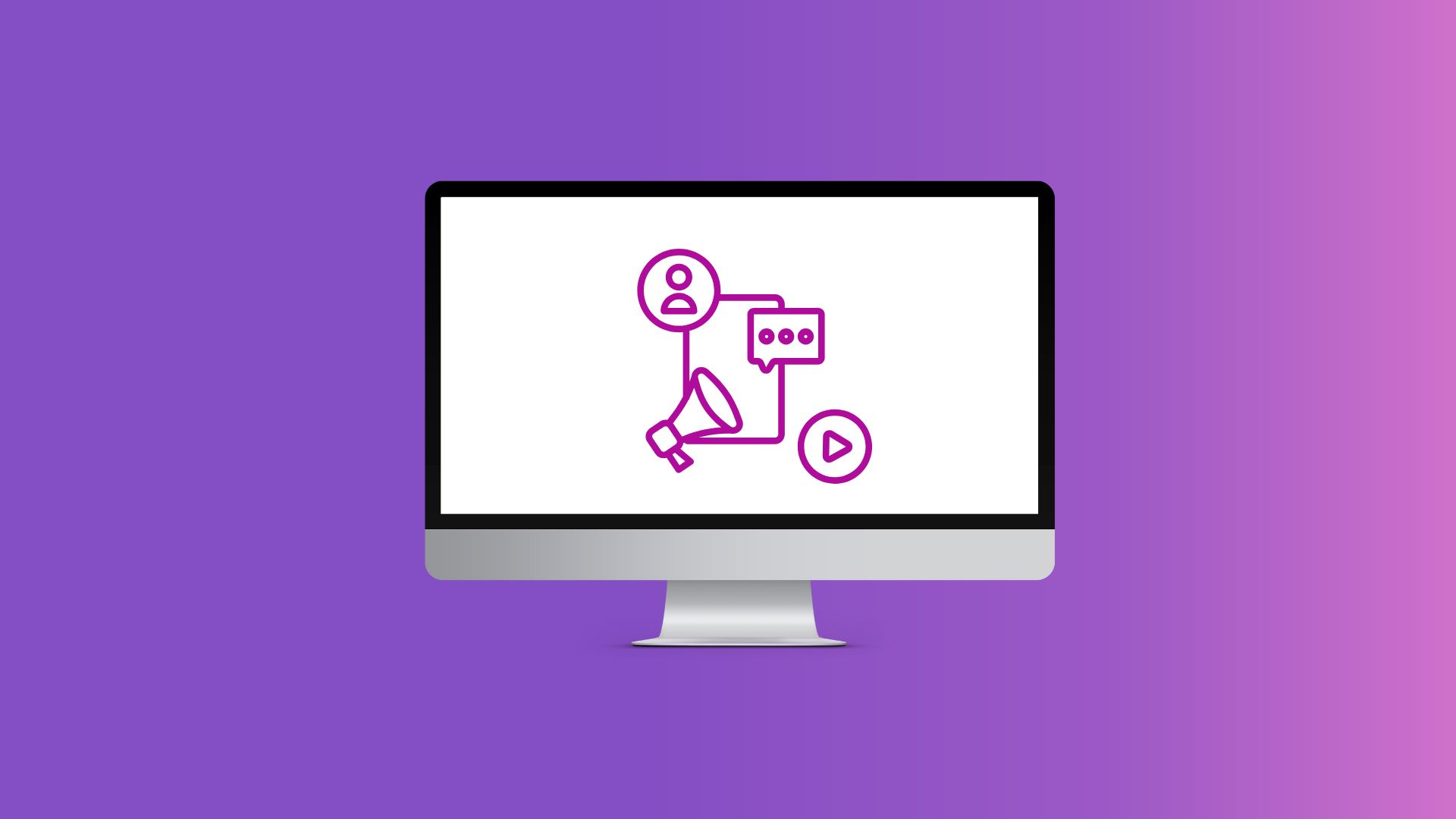What is Lead Generation in Digital Marketing: A Complete Guide

What Is Lead Generation?
The global lead generation market could reach $10.5 billion by 2032. That’s a staggering Compound Annual Growth Rate (CAGR) of 14.4%.
How could lead generation “generate” that amount of revenue? It’s because it has gone beyond the traditional lead generation process.
Lead generation still refers to identifying potential customers for a business. However, the course of action has become more targeted. Today, sales teams use innovative lead generation software to capture leads.
Of course, the priorities remain the same. Sales and marketing teams still target two types of leads. These are Market Qualified Leads (MQLs) and Sales Qualified Leads (SQLs).
These leads are essential, especially for eCommerce and SaaS sales funnel strategies. Let’s compare them through practical examples:
- MQLs: A marketing-qualified lead shows interest but isn’t committed to a purchase. For example, a person attended a live webinar you hosted. They are interested in the webinar topic. However, they haven’t yet decided to purchase your product.
- SQLs: A sales-qualified lead comes with an intent to purchase. This calls for direct contact with your sales team. These “hot prospects” might have requested free trials or consultations.
Sales and marketing departments use digital tools to capture potential leads. Moreover, they utilize data-driven approaches to further nurture leads. These digital strategies make up the lead generation we know today.
The Importance of Lead Generation
Lead generation integrates a targeted approach. But it’s more than just sourcing for prospective customers’ information.
Do you want to drive sustainable growth? Acquiring high-quality leads is the key. Here are the reasons why:
- Quality business leads: Generating leads isn’t just targeting prospective customers. These are people with genuine interest in your product or service. This can help reduce customer churn if you successfully nurture and onboard.
- Inbound marketing: Lead generation isn’t about cold calling anymore. Inbound lead generation provides solutions to potential customers. This is a great way to increase brand authority and trust.
- Product development: You collect customer insights when you generate leads. These are useful data in developing your product or service. This way, you’re also enhancing your service to existing customers.
Moreover, the lead generation funnel involves the marketing and sales process. Effective lead generation strategies look like this:
- You create an ideal buyer profile. This includes customer demographics, interests, and pain points.
- You use social media ads to reach ideal buyers. You acquire marketing-qualified leads that the marketing team can nurture into the next stage.
- The lead is successfully nurtured into the sales funnel. Here, the sales team takes over. They follow up with personalized recommendations or product demos.
Lead generation encompasses the marketing and sales pipeline. That includes acquiring and retaining customers. The lead quality can dictate Customer Lifetime Value (CLV). This refers to the total revenue a single customer can bring.
What makes lead generation important is its overall business impact. High-quality leads can turn into high-value paying customers.

Key Elements of Effective Lead Generation
Integrate these key elements to acquire high-quality leads for your business.
Target audience identification
Lead generation specializes in targeted campaigns.
Take, for example, Nike’s targeting approach. How do they offer product recommendations that match each customer’s preferences? They do that through audience segmentation.
Here are steps in segmenting your audience base:
- Buyer personas: Who is your ideal customer? Consider demographics, pain points, and preferences. You can use HubSpot’s Make My Persona tool for this step.
- Customer data: Leverage customer data from your platforms. Use social media insights and website metrics. Track behavior patterns, engagement spikes, and top-performing pages.
- Competitive research: Monitor your competitors’ reach and engagements. For example, you can use Sprout Social to uncover competitor brand mentions. Use this data to know more about your niche audience.
Most importantly, try to regularly engage with your audience. Sure, there are lead generation tools that you can use. But nothing beats direct conversations with your target customers.
Creation of compelling content
Content marketing is essential in a successful lead generation strategy.
To generate leads, you need content that resonates. This isn’t just for startups or growing businesses. Even enterprise-level brands use content marketing strategies for global growth.
Let’s say that you already understand your customers’ interests. How can you craft content that will attract their attention? Here’s how:
- Content variations: Don’t stick to one form of content. Social media platforms require unique content forms. For instance, high-quality images and reels are great for Instagram. For Twitter, you might want to create short, witty posts.
- User-generated content (UGC): Encourage your audience to share their experiences. Incentives can be exchanged for customer reviews or feedback. Host contests where customers share how they use your products.
- Search Engine Optimisation (SEO): It’s not just about your social media presence. Try to be more visible on search engines, too. Use tools like Google Keyword Planner if you’re pushing for Google ads.
Content marketing can get you more quality leads. However, don’t be overaggressive in promoting your brand. Focus on addressing customer needs before anything else.
Strategic use of calls-to-action (CTAs)
The proper use of CTAs is often overlooked in marketing campaigns. CTAs encourage people to go further down the sales funnel. In short, this could bridge the gap between inactivity and conversion.
Here are proven tips for strategically using CTAs:
- Stage-specific CTAs: Know your target audience first. Are you addressing people at the top of the funnel? Or are you reaching out to a sales-qualified lead? You should have specific CTAs for each stage of the pipeline.
- Content alignment: Ensure that the CTA is aligned with your content. This gives people more reasons to click on your link.
- Visuals: Clear visibility is crucial in placing CTAs. Place your CTAs where they are immediately visible. Some people don’t scroll down or read an entire social media post.
In addition, use words that are relatable and actionable. Don’t use technical jargon in your CTAs.
Optimization of landing pages
Landing pages are mostly created for marketing purposes. These pages present new leads and potential customers.
A landing page tells a lot about your brand. They’ll discover your products, solutions, and overall branding. This is your chance to make a great first impression.
Optimizing your landing pages can get you product-qualified leads. Here’s how you can do it:
- Value proposition: Clearly indicate your Unique Selling Proposition (USP). How is your product different from other brands? You can address this question through case studies or testimonials.
- Visual technique: Your landing page shouldn’t rely on pure text. Incorporate infographics and data charts to prove your claims.
- Lead capture form: Don’t ask for too much information in your lead capture forms. Even their name and email address are enough to acquire leads. A long form could discourage people, stripping you of potential leads.
- Customer-centric approach: Prioritize the pain points of your audience. Make the content relatable, whether it’s a case study or a whitepaper. People are motivated to take action when they see immediate solutions.
Strong CTAs are also integral in landing pages. Ensure that the internal link is related to the CTA.

Key Strategies to Generate Leads Effectively
Here are platforms you can use to generate leads for your business.
Email marketing
Email marketing is still relevant and actually growing. By 2027, this niche is projected to reach $17.9 billion in revenue.
So, it’s not surprising that email marketing remains essential in lead generation. Large companies still use enterprise email marketing strategies today. Emails allow businesses to provide personalized messages to their audience.
Here’s how email marketing boosts your lead-generation campaign:
- Targeted communication: Tools like Mailchimp have audience segmentation solutions. After audience segmentation, you can personalize your messages. Use personalized greetings and subject lines to hook your audience.
- Automated workflows: Digital marketing is big on automated workflows. You can also automate several email sequences, too. This includes welcome emails, follow-up emails, and personalized recommendations.
- Progress tracking: You can easily monitor your email campaign’s performance. Track key metrics like open rate, click-through rate, and conversion rate.
A personalized email campaign can generate more leads that convert.
Social media strategies
It’s almost impossible to generate leads without social media.
People of all ages now turn to social media for information. This makes it a viable platform for capturing potential leads.
Here’s how you can use social media for lead generation:
- Paid advertising: You can boost social media posts through paid ads. For example, Facebook Ads Manager allows you to reach targeted users. However, make sure that you don’t over-rely on paid ads.
- Community engagement: Engage directly with your audience to boost organic reach. This is still the best way to acquire new leads. Host webinars, expert interviews, and live Q&As.
- Content management: You can schedule, delete, and edit social media posts. This allows you to optimize under-performing posts.
Social media platforms also have built-in analytics tools. Leverage this feature to improve your lead generation campaign.
Search engine optimization (SEO)
SEO is a powerful lead-generation magnet. It’s a form of inbound marketing that increases brand visibility.
Also, ranking in search engines increases website authority. People see you as a reliable source of information. This could help you acquire product or service-qualified leads.
We enumerated several SEO techniques related to lead generation:
- Keyword research: Research long-tail keywords for your content. Also, purchase intent should be considered when targeting keywords.
- Local SEO: Complete your Google My Business profile. This allows you to optimize for local search queries.
- User Experience (UX): Ensure that your website is responsive across devices. This includes loading speed, mobile responsiveness, and internal linking.
An effective SEO strategy can increase organic traffic. In turn, you’ll have more chances of acquiring quality leads.
Pay-per-click (PPC) advertising
If you have a big budget, you can consider PPC advertising.
Investing in PPC ads comes with a cost. But it does help you reach your target audience immediately. That’s the unique concept of this strategy.
For your PPC ad campaign to work, consider these elements:
- Targeting features: Target the right keywords, demographics, and locations. You can also consider customer interests, purchase patterns, and online behaviors.
- Scheduling: Determine specific times when your audience is active. Most PPC ad platforms share this information with advertisers.
- Engaging copy: Advertising isn’t cheap. So, make sure that you have an impeccable copy. Ensure that all information is correct and relatable. Moreover, review for any errors in internal linking and page responsiveness.
Lead quality could depend on how you integrate these elements. It will be an ongoing optimization, though. Test variations of your ads to unlock optimum performance.
Tools and Software for Lead Generation
Digital marketing is always synonymous with digital tools. That’s also true for digital lead generation.
Streamline your marketing campaigns with lead-generation tools. These tools provide data-driven insights on lead scoring and lead nurturing. Plus, it offers automation in almost every marketing facet.
We categorized these tools to their specific purposes. Take a look:
- Customer Relationship Management (CRM): CRM tools help manage customer engagements. These tools streamline your lead organization processes. Examples of excellent CRM systems are Salesforce and Zoho.
- Marketing automation: You can automate recurring marketing tasks. These include lead scoring, email sequences, and lead alignment. Automate these tasks through Marketo or ActiveCampaign.
- Predictive lead scoring: Lead scoring is the assessment of lead quality. Predicting lead scores shows your leads with high conversion probability. Today, there are AI-powered tools for predictive lead scoring. Use innovative tools like Drift and Conversica.
Remember, there’s no best lead generation tool. However, you can find powerful tools for each sales and marketing task. Study how these tools work to maximize your investment.
Measuring the Success of Lead Generation Process
It’s rare for lead generation to hit a one-time, big-time jackpot. That’s not even what you’re aiming for.
The market evolves quickly by the day. That said, you need to readily adapt to the changes. This requires evaluating your lead generation efforts.
Here are key metrics that your sales team should measure:
- Lead Acquisition Cost (LAC): This is the total cost of acquiring a new lead. Divide your total lead generation spending by the total generated leads.
- Lead Conversion Rate: How many leads convert into paying customers? Divide total converted leads by total generated leads.
- Lead Frequency: Do your efforts often turn to a product-qualified lead? How many of your leads are sales-ready or marketing-qualified? Check the type frequency of your leads to assess this metric.
Use the tools we mentioned in the previous section. CRMs often offer metrics tracking and ROI reporting. These actions are key in optimizing your lead gen process.

Common Challenges in Lead Generation
Marketing won’t exist without the challenges that come with it.
Market trends and consumer needs directly impact lead generation. These present constant challenges to marketing and sales teams.
A lead generation team has to deal with challenges like these:
- Competition: Increased competition is a marketing norm. For example, how can you differentiate your inbound marketing strategy? Can you come up with unique content ideas?
- Technology: Stay updated with the latest marketing technologies. Your marketing team should know how lead generation tools work.
- Regulations: Sales lead generation should comply with regulations. The difficult part is that these regulations change. Data privacy is a crucial talking point these days.
- Resources: Lead gen teams deal with manpower and budget constraints. Maintaining an internal team could be resource-heavy. They need to be constantly trained on new marketing trends and technologies.
Keeping up with these challenges is very difficult. You also have your product or service to tend to.
So, how can you make the lead gen process more efficient? Most global brands tend to partner with external marketing teams. But why is outsourcing more cost-effective?
For example, you’re working with experienced marketers like Fortis Media. They already have the inside knowledge of how lead gen works. Plus, they can devise innovative strategies that are aligned with market trends.
This way, you can focus on product development and other business matters.
Other Practices for A Successful Lead Generation Campaign
To wrap it up, let’s discuss more strategies you can use for your lead generation campaigns.
Targeting the right audience
Lead generation is the process of reaching potential customers. You need the right audience to acquire quality leads. Fortunately, each marketing platform offers audience segmentation.
Social media channels have in-built demographic targeting. Email tools also provide targeted campaigns. These will help you create personalized messages.
Furthermore, you should know that customers’ needs quickly change. Use tools like AnswerThePublic to see what people are talking about.
Creating compelling offers and content
You can’t just promote your product right away. People are discouraged by overaggressive, pushy marketing tactics.
Today, inbound marketing is the sustainable growth driver. You establish authority while also helping people find answers. This way, you naturally attract quality leads.
Create content that resonates. You can use Semrush’s Keyword Magic Tool to discover trending niche keywords. This can help you plan content that your audience needs.
Using A/B testing for optimization
Don’t be discouraged if your lead generation falls. You can’t get it on your first try.
That’s why we recommend A/B testing. This way, you can test different variations of your lead gen process. It’s a great way to know which works and which doesn’t.
You can use A/B testing tools, consider Optimizely or VWO when testing variations of your campaign.
Implementing multi-channel approaches
Don’t focus on just one platform or channel. You can always put up content on different digital channels.
However, multi-channel marketing isn’t for everyone. It depends on your brand and target customers.
Monitor your competitors’ platforms and run test campaigns. If you have a small budget, focus on profitable channels first.
Conclusion
Lead generation marks the start of your marketing journey.
It’s not a straightforward process, though. You can’t always convert a lead into a paying customer. You’ll navigate through various challenges like market trends and competition.
Overcome these hurdles by optimizing your lead generation strategy. Stay updated with market changes and leverage digital tools. This can help you produce content that resonates and captures leads.
FAQs
How does lead generation differ between B2B and B2C contexts?
B2C and B2B lead generation differ in target customers and sales funnel. B2B lead gen aims to establish authority through inbound marketing, while B2C tactics utilize catchy visual content. B2B companies focus on businesses or decision-makers within a specific niche. On the other hand, B2C companies aim for individual customers.
Can lead generation be fully automated, and what are the risks?
It’s recommended to only partially automate lead generation. However, there are recurring tasks that you can fully automate. These tasks include email drip campaigns, social media scheduling, lead scoring, targeted ads, and data entry. You can also automate metric tracking and performance reports.
What are the best strategies for generating leads?
The best practices for generating leads depend on your target audience, products, and business goals. These lead gen practices include audience segmentation, content marketing, SEO, social media marketing, email marketing, and paid advertising. Using a multi-channel approach is also beneficial, especially for large-scale businesses.
How important is content personalization in lead generation?
Content personalization attracts high-quality leads that have the best chances of conversion. Crafting engaging content improves brand trust, expands your online community, and increases conversion rates. It is also a sustainable growth driver, especially with how people readily consume content these days.
What role does customer feedback play in refining lead generation strategies?
Customer feedback plays a huge role in your lead generation’s relevance and effectiveness. This gives you important lead information on customer interests, pain points, behavior patterns, and demographics. You can source customer feedback through surveys, polls, direct interviews, customer support interactions, and social media engagements.
Read our other articles

Google March 2025 Core Update: iGaming Industry Impact with Real Cases


Benefits of Enterprise SEO: Why Large-Scale Businesses Need It


B2B SaaS SEO: Best Practices and Strategy for 2025






